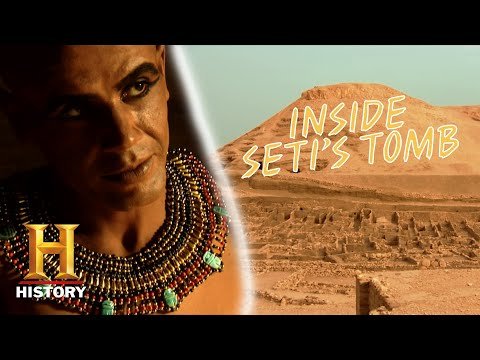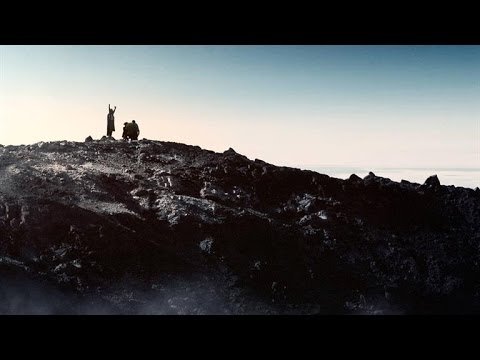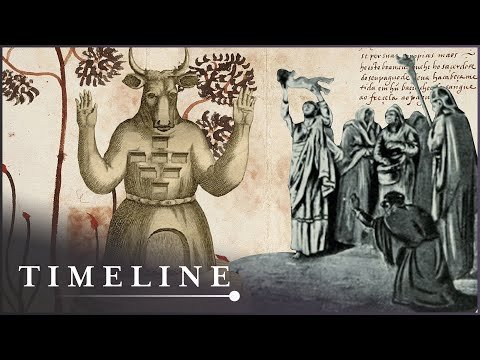5 Horrifying Discoveries of Ancient Human Sacrifice
Religion is a funny thing. Because few gods, nowadays at least, actually appear to us in our daily lives, it can be hard to interpret what they want. For most of human history, the best way to please the gods was to offer up valuable objects to them. These could be costly jewels, golden objects, or animals. But sometimes, these gifts were insufficient to win divine approval.
Unsurprisingly, no gift to the gods was more valuable than human life. Many of the tales of human sacrifice from the ancient world seem fanciful, like Caesar saying Druids burned people in huge wicker statues, but archaeology has shown that human sacrifice was a very real phenomenon.
Here are ten examples of human sacrifice from the ancient world.
In 1999, the bodies of three children were discovered in a chamber high in the Andes mountains. They were dead. Long dead, but they looked as if they might have just fallen asleep. They have been described as among the best-preserved mummies in the world and have provided a great deal of evidence about the practice of human sacrifice in the Inca empire.
Sources on Inca religion record how Capacocha ceremonies often involved human sacrifice. Children, especially those that were considered physically perfect, were taken from their families and underwent purification rituals in the Inca capital. From there, they were carried to a mountain location and left to die or helped to die with violent blows.
The bodies of the children found at Llullaillaco reveal that the sacrifices were well fed and cared for before their sacrifice. The cold and dry conditions of the area preserved even the internal organs of the mummies. From this, we know that they were given a protein-rich diet—and a lot of alcohol and coca leaves. It seems that the children were drugged when placed into their tomb and died from the cold.
2 Egyptian Retainer Sacrifices
Egyptian mummies are probably the most famous in the world. For the Egyptians, they served a very practical part in their religion. The Egyptians believed in an afterlife and a soul, called the ka, but death was not as simple as the soul flying out of the body. The ka needed an intact body to return to—hence mummification was necessary for the soul’s well-being.
If you wanted your soul to be cared for in the afterlife, then you might sacrifice your servants and retainers when you died. The first king of the first Egyptian dynasty died around 3000 BC. King Aha’s tomb is surrounded by the graves of court officials who were sacrificed to serve him in the eternal hereafter. Aha’s successor as pharaoh was his son Djer, and his own grave revealed 200 people buried with him. As all the graves were filled at the same time, it seems unlikely they just happened to die with their king. Most of the sacrifices found with Djer were female and may represent the wives and concubines of the pharaoh.
Human sacrifice in Egypt appears to have ended with the first dynasty. Instead, figurines called shabti or ushabti were placed in tombs to act as servants for the departed.
The Carthaginians were the greatest rivals of the Roman Republic. The Punic Wars lasted from 264 BC to 146 BC and saw titanic military campaigns from Spain to Sicily to the heart of Italy. Eventually, the Romans triumphed and destroyed Carthage utterly. Little remained of Carthaginian society, and historians had to rely on accounts from the victors. These sources painted the Carthaginians as practicing infant sacrifices on a monumental scale.
For a long time, this was dismissed as just Roman propaganda. But archaeologists uncovered huge burial sites, called tophets, that contained large numbers of young infant skeletons. Were these simply cemeteries for children who died as a consequence of the dangers of childbirth?
It seems unlikely. The bodies were found buried in urns after being cremated. Atop the graves were tombstones that thanked the gods—”the gods heard and blessed me.” The ages of the infants suggest they made it past the most dangerous time of infancy. These babies were offered up to the gods as the most precious possession of their parents.
Judging how a person died in antiquity can be a tricky business. Did they die from an accident or a violent attack? The bones alone may not be enough to tell. Context in archaeology is key, but it is often left to interpretation, raising questions about the validity of a claim.
The Minoan civilization flourished from around 2000 BC to 1450 BC. Its spectacular ruins include palaces with richly decorated paintings. There was little evidence for human sacrifice there until a discovery at Anemosphilia]. Three bodies were discovered in the ruins of a temple, seemingly as if they were crushed suddenly during an earthquake.
One was of a young man who looked as if he died on a large stone some interpreted as an altar. His feet were bound. A bronze dagger was found among his bones. With him were an older man (a priest) and a woman. The woman was wearing a piece of iron jewelry. As this was before the Iron Age, the iron must have been found—probably from a meteorite.
Not all archaeologists agree with the reading of the finds at this site but human sacrifice remains a clear possibility.
5 Ancient Chinese Human Sacrifice
We know a great deal about ancient Chinese rituals in the Shang dynasty (1600–1046 BC) from a very unlikely source. Thousands and thousands of oracle bones have been recovered from Chinese sites. These consist of bones and turtle shells with a question inscribed on them. These were then exposed to heat, and how the bones cracked revealed the answer to the question.
In one case, a fragment of a human skull was used in this way for divination which may suggest a human sacrifice. But the texts preserved on the bones also describe human sacrifices. One bone has “shall one thousand cattle and one thousand humans be sacrificed?” written on it. Another records how 9,000 people were sacrificed.
Two main types of human sacrifice emerge from the oracle bones. One is the mass execution of servants and slaves when a ruler dies, and they are forced, or volunteer, to accompany them in death. The other involves prisoners of war being sacrificed to satisfy the gods and bring about the end of a famine.


